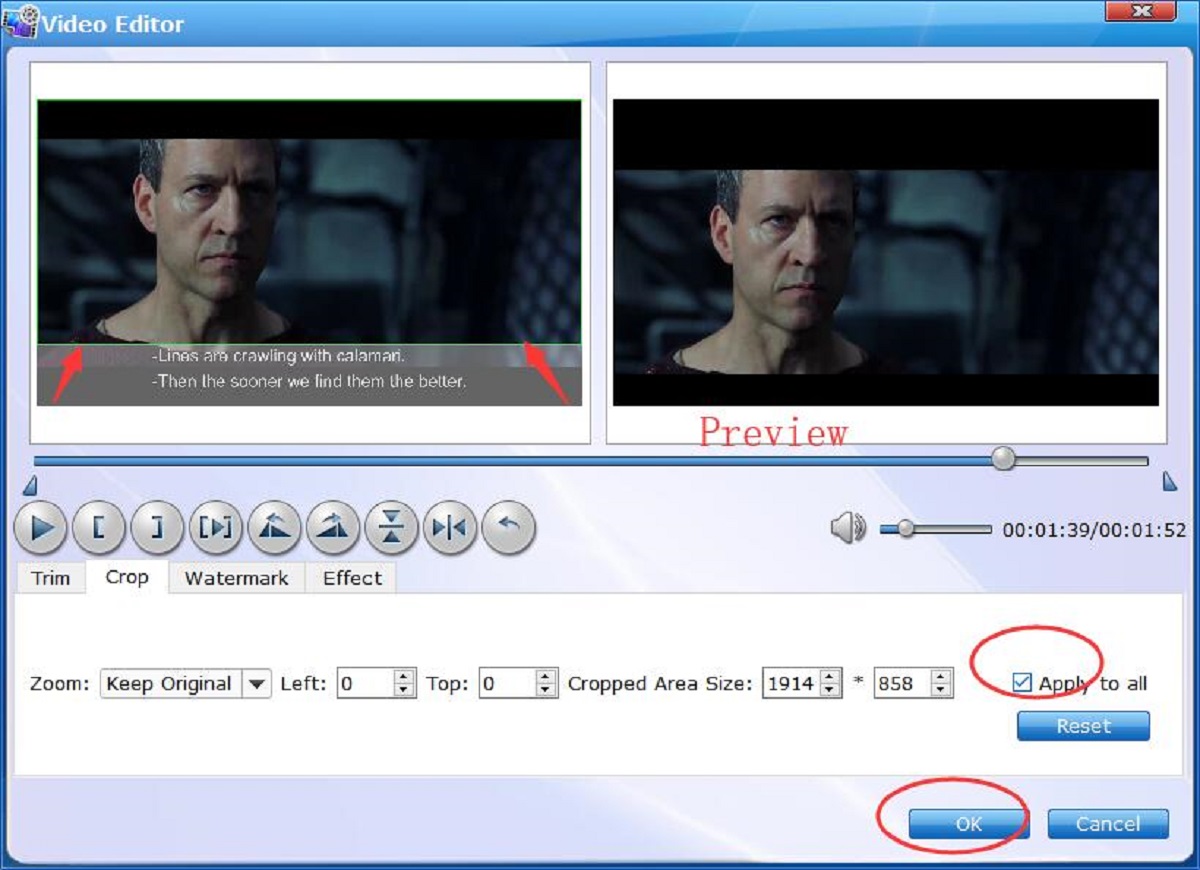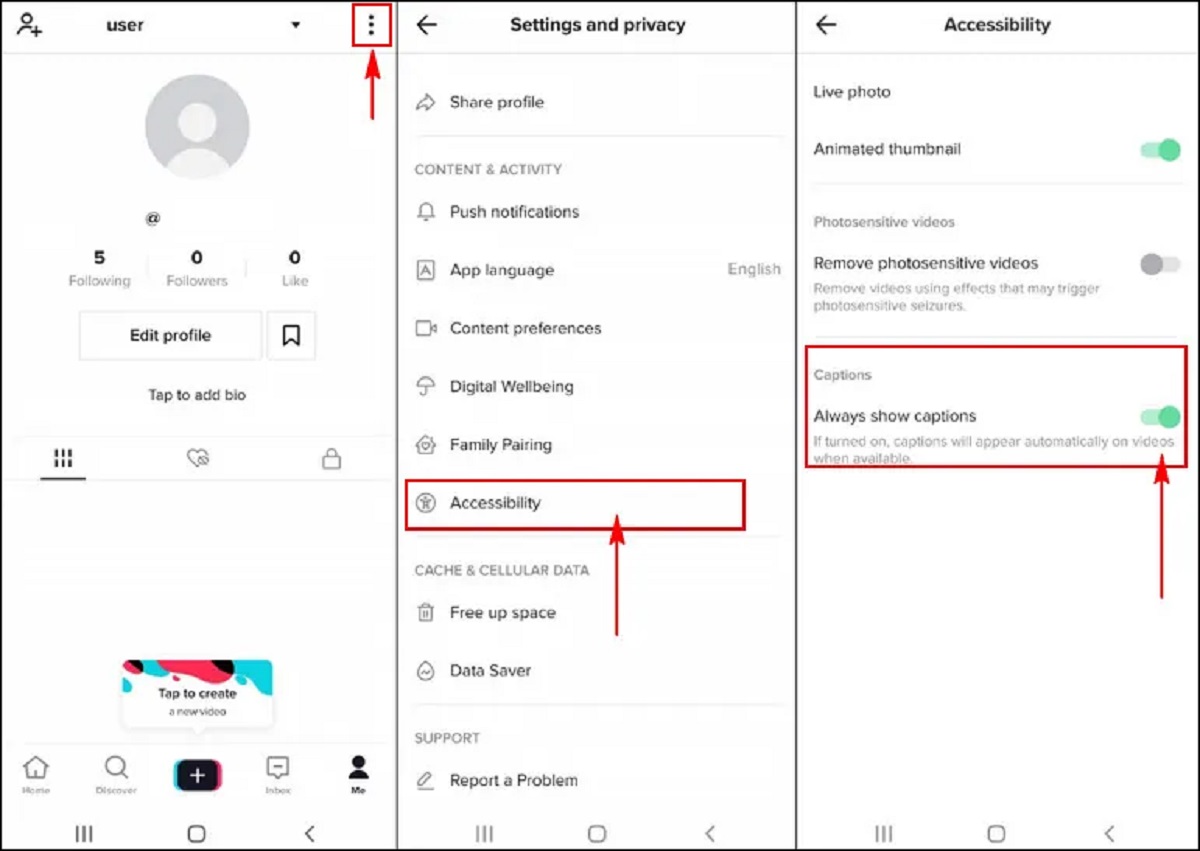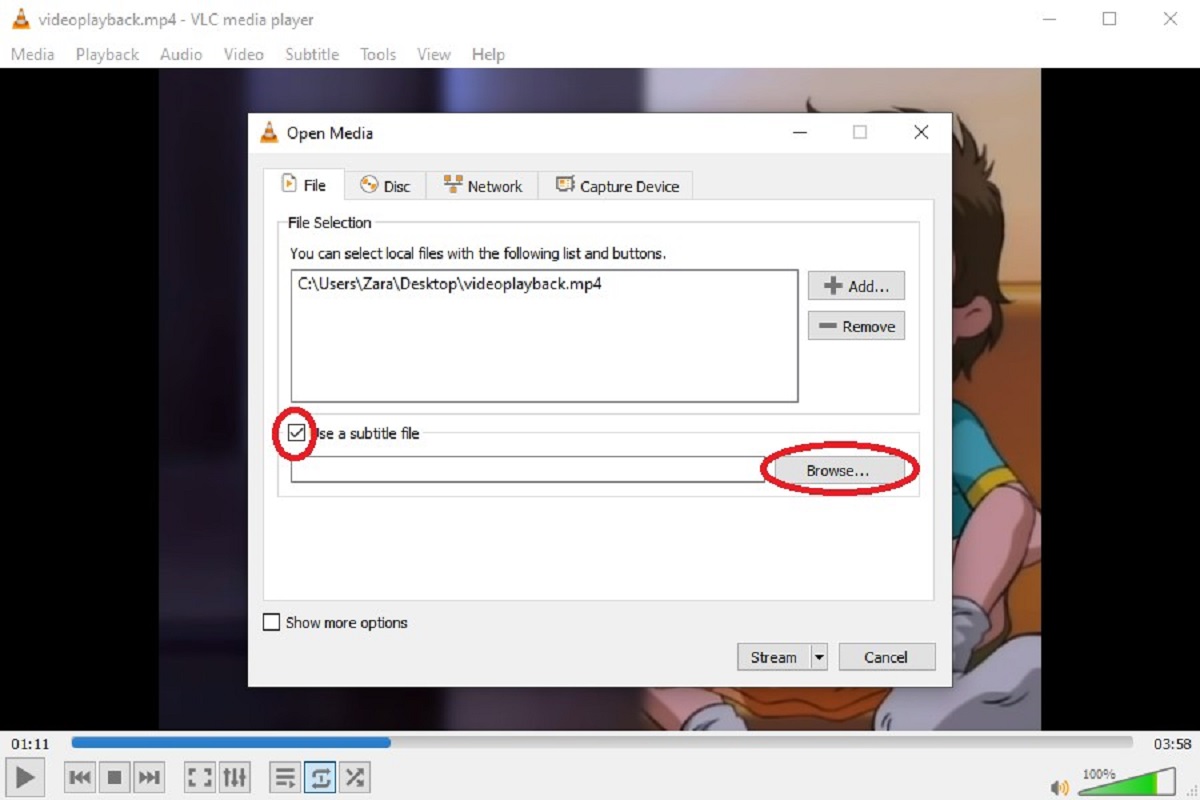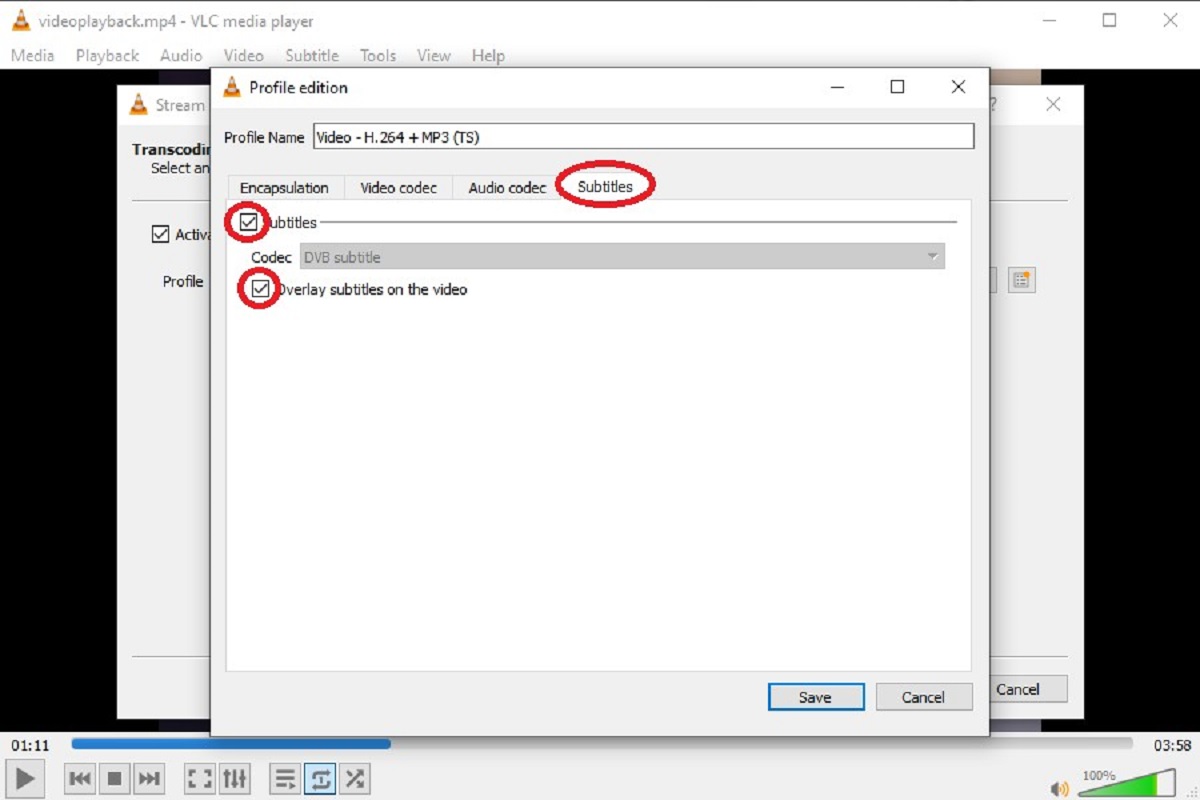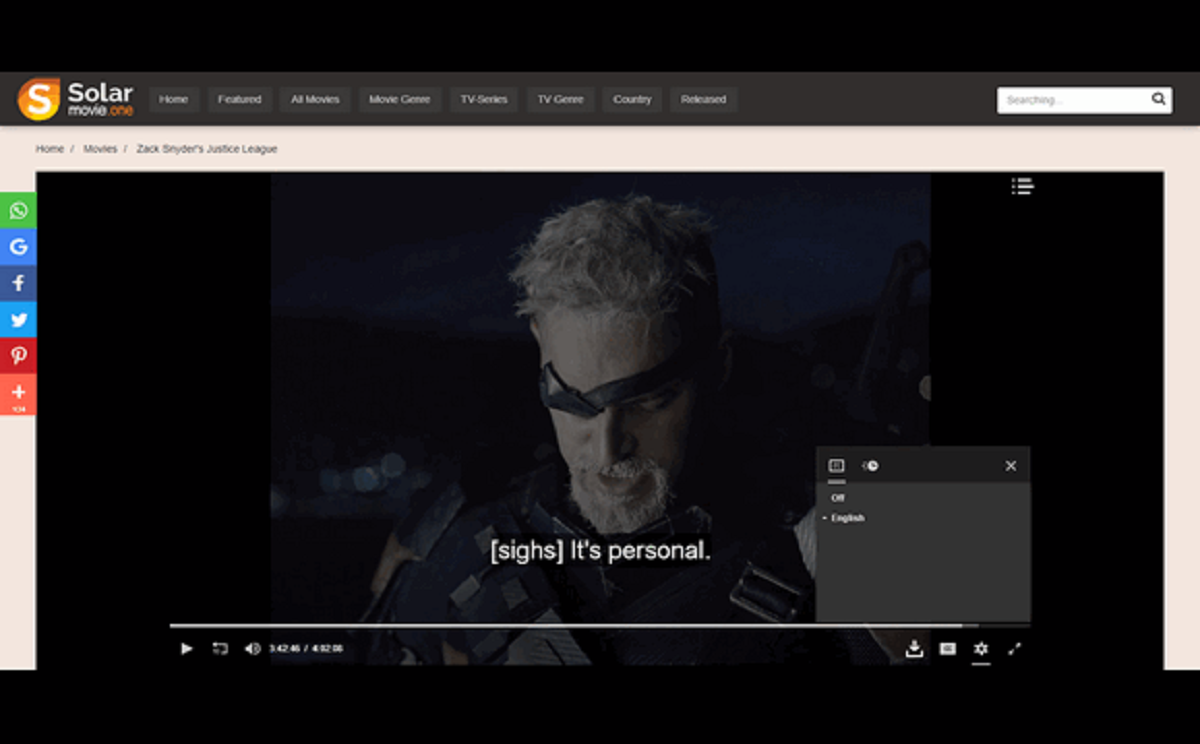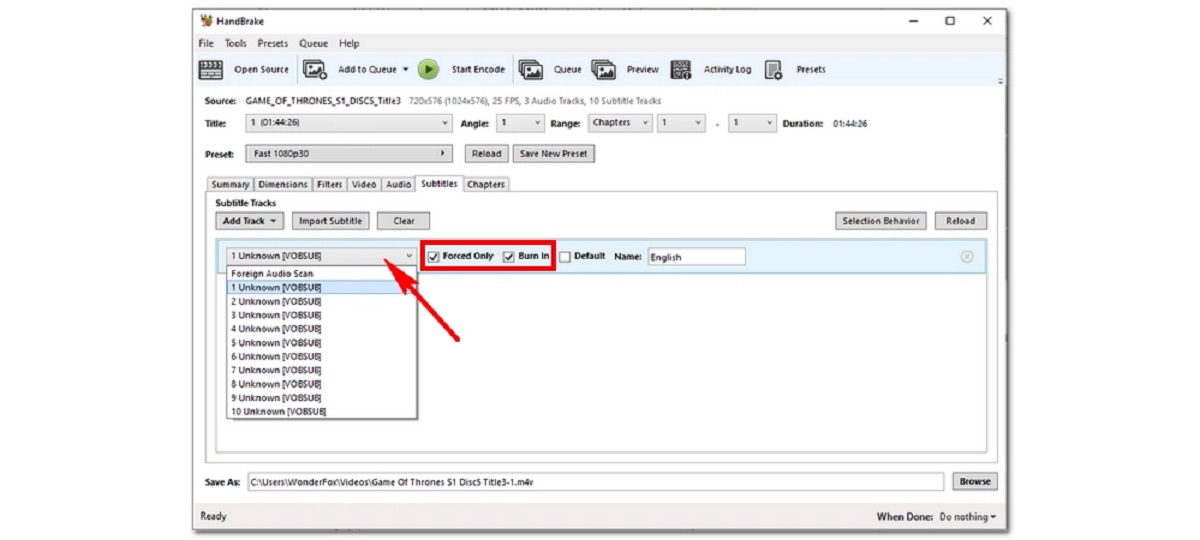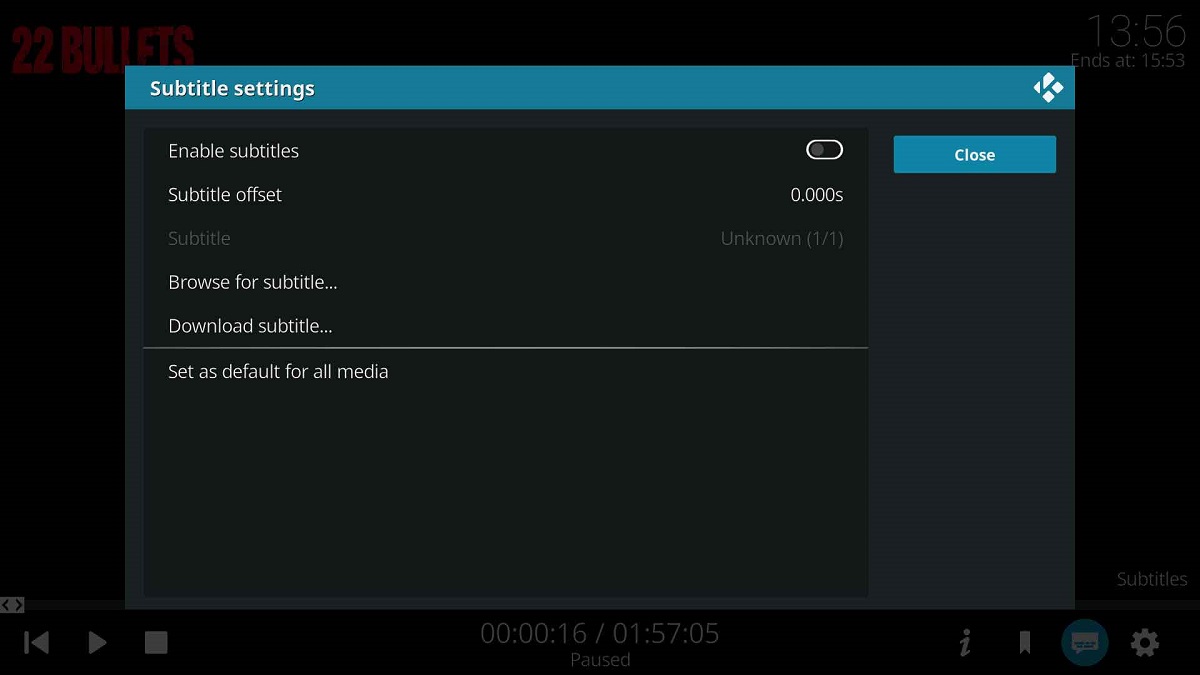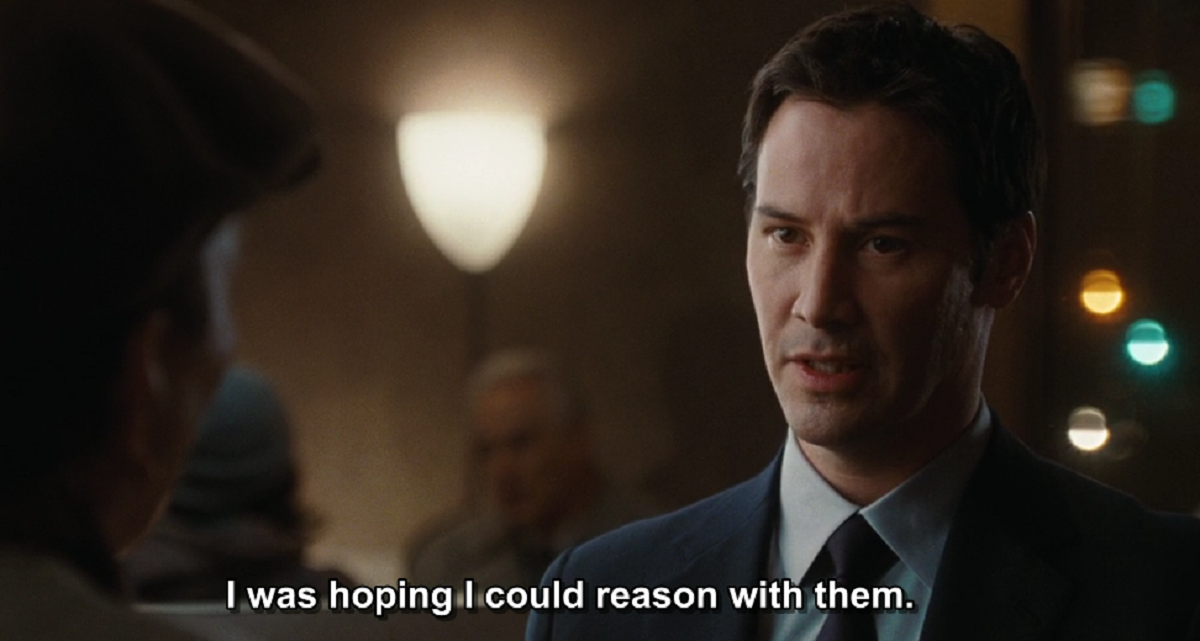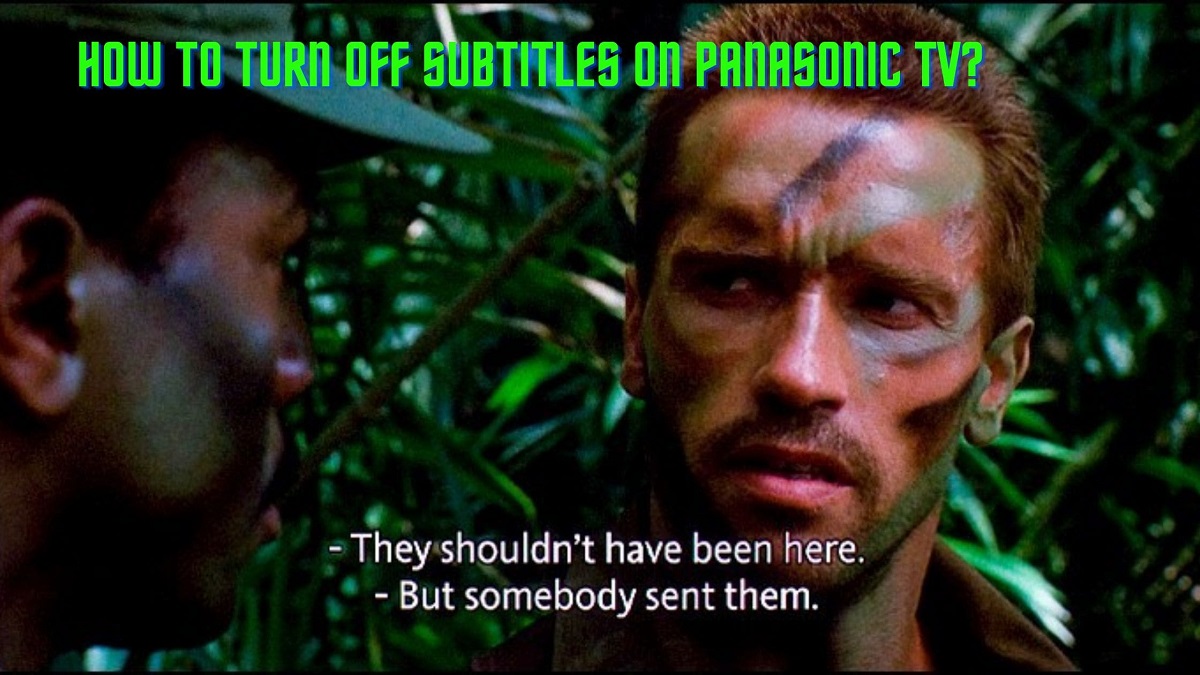Introduction
Subtitles are a valuable tool for enhancing the viewing experience of movies, TV shows, and videos, providing accessibility and allowing viewers to understand the dialogue even if they don’t speak the language fluently. However, in some instances, subtitles are “hardcoded” into the video, meaning they are embedded directly onto the video frames. While hardcoded subtitles may be useful for certain situations, there are times when you might want to remove them.
Hardcoded subtitles can be problematic when you want to watch a video in a different language or when you simply find them distracting or obstructive to enjoying the visuals. You may also come across a video with hardcoded subtitles that are inaccurately translated or poorly positioned on the screen. Fortunately, there are several methods you can employ to get rid of hardcoded subtitles and enjoy a clean viewing experience.
In this article, we will explore three common methods to remove hardcoded subtitles from videos. The first method involves using subtitle extraction tools that can extract the subtitles from the video file. The second method is cropping or masking the subtitles so that they are no longer visible. The final method is manually editing the video files to remove the hardcoded subtitles.
It’s important to note that removing hardcoded subtitles should only be done if you have the legal rights to modify the video content. Always ensure you are in compliance with copyright laws and the terms of use for the video before attempting any modification or redistribution.
Now, let’s dive into the various methods of getting rid of hardcoded subtitles and make your viewing experience more enjoyable!
What are Hardcoded Subtitles?
Hardcoded subtitles, also known as burned-in subtitles or forced subtitles, are subtitles that are permanently embedded onto the video frames. Unlike regular subtitles that can be turned on or off, hardcoded subtitles are “burned” onto the video and cannot be removed or disabled through typical video player settings.
Hardcoded subtitles are commonly used in situations where the video content includes a different language or when there is a need to provide subtitles for viewers who may have difficulty hearing or understanding the dialogue. They are often seen in foreign films, documentaries, and videos with multilingual content.
The process of hardcoding involves merging the subtitle text with the video image, creating a single video file that includes both the visuals and the subtitles. Once the subtitles are hardcoded, they become a permanent part of the video and cannot be altered or removed without making changes to the video file itself.
Hardcoded subtitles are typically positioned at the bottom of the screen, although their placement may vary depending on the video production. They are often styled with a different font, color, or background to make them stand out and ensure legibility.
While hardcoded subtitles can be useful for viewers who require constant subtitles or for ensuring that the subtitles are always available regardless of the media player or device used, they can also be a hindrance in certain situations. Some viewers may find hardcoded subtitles distracting, especially if they cover important parts of the visuals or interfere with the overall viewing experience. Moreover, if the hardcoded subtitles are poorly translated, inaccurately timestamped, or have grammatical errors, they can significantly impact the viewer’s understanding and enjoyment of the content.
Now that we understand what hardcoded subtitles are and their purpose, let’s explore the various reasons why you might want to remove them in the next section.
Why Remove Hardcoded Subtitles?
While hardcoded subtitles serve their purpose in certain situations, there are several reasons why you may want to remove them from a video:
1. Language Preference: If you understand the language spoken in the video or prefer to watch it without subtitles, removing hardcoded subtitles allows you to enjoy the content in its original language or without any distractions.
2. Viewing Experience: Hardcoded subtitles can sometimes obstruct important visuals or cover crucial details on the screen. Removing them enhances the overall viewing experience, allowing you to fully immerse yourself in the video without any distractions.
3. Visuals and Aesthetics: Some videos are visually captivating, and you may want to appreciate the cinematography, special effects, or artistic elements without the distraction of subtitles. Removing hardcoded subtitles can offer an unobstructed view of the visuals, enhancing the visual appeal of the video.
4. Inaccurate or Poorly Translated Subtitles: Hardcoded subtitles are often added during the video production process, and errors in translation or inaccurate subtitles can occur. Removing hardcoded subtitles gives you the opportunity to replace them with accurate subtitles or watch the video without any misleading or confusing text.
5. Multilingual Audience: If you plan to share the video with a diverse audience or upload it to a platform that allows user-selectable subtitles, removing hardcoded subtitles gives viewers the flexibility to choose the language they prefer for the subtitles.
6. Accessibility Options: Some media players or streaming platforms provide accessibility options for subtitles, such as the ability to change the font size, color, or background. Removing hardcoded subtitles allows viewers to take advantage of these features and customize the subtitles to suit their needs.
By removing hardcoded subtitles, you regain control over your viewing experience, allowing you to enjoy videos without any visually distracting or inaccurately translated text. In the next section, we will explore three methods you can use to remove hardcoded subtitles from your videos.
Method 1: Using Subtitle Extraction Tools
One of the most common and effective methods for removing hardcoded subtitles is by using subtitle extraction tools. These tools work by analyzing the video file, detecting the hardcoded subtitles, and extracting them as separate subtitle files that can be toggled on or off during playback.
To remove hardcoded subtitles using subtitle extraction tools, follow these steps:
- Identify the appropriate subtitle extraction tool: There are various subtitle extraction tools available online, both free and paid. Look for a tool that is compatible with your operating system and supports the video file format you are working with.
- Download and install the subtitle extraction tool: Once you have identified a suitable tool, download and install it on your computer.
- Open the video file: Launch the subtitle extraction tool and open the video file from which you want to remove the hardcoded subtitles.
- Analyze and extract the subtitles: Use the subtitle extraction tool’s features to analyze the video and extract the hardcoded subtitles. The tool will scan the video frames and identify the subtitle text embedded in them.
- Save the extracted subtitles: After the extraction process, save the subtitles in a separate subtitle file format, such as SRT (SubRip) or ASS (Advanced SubStation Alpha).
- Verify and test the extracted subtitles: Open the video file in a media player that supports the new subtitle file and test if the hardcoded subtitles have been successfully removed. You should be able to toggle the extracted subtitles on or off during playback.
It’s important to note that the effectiveness of subtitle extraction tools may vary depending on the complexity of the video and the quality of the hardcoded subtitles. In some cases, the extraction process may not be 100% accurate, and manual adjustments to the extracted subtitles may be required.
Using subtitle extraction tools is a convenient method to remove hardcoded subtitles as it allows you to maintain the original video quality while providing the flexibility to control the display of subtitles. However, if the subtitle extraction process does not yield satisfactory results, you may consider exploring other methods, such as cropping or masking the subtitles, or manually editing the video files, which we will discuss in the following sections.
Method 2: Cropping or Masking the Subtitles
If using a subtitle extraction tool is not feasible or if you prefer a simpler method, you can remove hardcoded subtitles by cropping or masking them. This method involves adjusting the video frame to remove or hide the subtitle area without altering the actual subtitle content.
To remove hardcoded subtitles using the cropping or masking method, follow these steps:
- Select a video editing software: Choose a video editing software that allows you to make precise edits to the video frame. There are various options available, both free and paid, with different levels of functionality.
- Import the video file: Open the video editing software and import the video file from which you want to remove the hardcoded subtitles.
- Crop or mask the subtitle area: Use the video editing software’s tools to crop or mask the area occupied by the subtitles. This can be achieved by adjusting the video frame, resizing, or covering the subtitle area with a solid color or another part of the video frame.
- Preview and export the edited video: Preview the edited video to ensure that the hardcoded subtitles have been effectively removed. Once satisfied, export the video in the desired file format.
When employing this method, it’s crucial to maintain a balance between removing the hardcoded subtitles and preserving the overall visual composition of the video. Avoid cropping or masking too aggressively as it may result in a loss of important visual elements or affect the seamless flow of the video.
This method works well when the hardcoded subtitles are positioned in a consistent location throughout the video. However, if the subtitles move or change position within the frames, additional editing effort may be required to track and adjust the cropping or masking accordingly.
Keep in mind that cropping or masking the subtitles does not remove the actual subtitle content from the video file. If you want to watch the video with subtitles at a later time, you may need to revert to the original video file or utilize subtitle extraction tools to extract the subtitles separately.
The cropping or masking method offers a straightforward approach to remove hardcoded subtitles, especially if you are not concerned about permanently altering the video file. However, if you prefer a more permanent solution or have complex subtitle requirements, manual editing of the video files may be a suitable option, as discussed in the next section.
Method 3: Manually Editing the Video Files
If you prefer more control and flexibility over the removal of hardcoded subtitles, you can choose to manually edit the video files. This method requires more advanced video editing skills and involves directly modifying the video frames to remove the subtitles.
To remove hardcoded subtitles by manually editing the video files, follow these steps:
- Select a video editing software: Choose a professional video editing software that provides comprehensive editing capabilities. This will give you the necessary tools and features to edit and manipulate the video frames.
- Import the video file: Open the video editing software and import the video file from which you want to remove the hardcoded subtitles.
- Identify the subtitle frames: Scrutinize the video to identify the frames that contain the hardcoded subtitles. Take note of the timestamps or visual cues that indicate the presence of the subtitles.
- Remove the subtitle frames: Using the video editing software, navigate to the subtitle frames and remove them by either deleting or replacing them with blank frames. Ensure that the removal is seamless and does not disrupt the flow of the video.
- Preview and export the edited video: Preview the edited video to confirm that the hardcoded subtitles have been successfully removed. Once satisfied, export the video in the desired file format.
Manually editing video files requires a deep understanding of video editing and may be time-consuming, especially for longer videos. It is crucial to have a keen eye for detail and accuracy to ensure that the removal of the hardcoded subtitles appears seamless and natural.
When using this method, it is highly recommended to work with a copy of the original video file rather than modifying the original directly. This way, you can always revert to the untouched video file if needed.
Keep in mind that manual editing of video files permanently removes the hardcoded subtitles. If you want to watch the video with subtitles in the future, you will need to re-embed or overlay the appropriate subtitles using a subtitle editing tool or video editing software.
The manual editing method grants you complete control over the removal of hardcoded subtitles, allowing for precise adjustments and ensuring a visually pleasing viewing experience. However, it requires advanced technical skills and may be more time-intensive compared to other methods.
Now that we have explored these three methods – using subtitle extraction tools, cropping or masking the subtitles, and manually editing the video files – you have the knowledge to choose the most suitable approach for removing hardcoded subtitles from your videos.
Conclusion
Hardcoded subtitles can be both helpful and hindering, depending on the viewer’s preferences and specific scenario. Fortunately, there are multiple methods available to remove these subtitles and tailor the viewing experience to individual preferences.
In this article, we explored three common methods for removing hardcoded subtitles from videos. Firstly, using subtitle extraction tools allows you to extract and toggle subtitles, providing flexibility and control. Secondly, cropping or masking the subtitles through video editing software enables you to remove or hide the subtitle area while preserving the original video. Lastly, manually editing the video files grants complete control over the removal of hardcoded subtitles, although it requires advanced skills and time investment.
When opting to remove hardcoded subtitles, it is crucial to ensure that you have the legal rights to modify the video and comply with copyright laws. Always take into consideration the impact of the removal on the overall viewing experience, and be mindful of preserving the integrity of the video content.
Now armed with these methods, you can choose the most appropriate approach based on the complexity of the video, your technical skills, and your desired outcome. Whichever method you choose, removing hardcoded subtitles will undoubtedly enhance your viewing experience, allowing you to fully appreciate the visuals and enjoy the content without any distractions.
So go ahead and try out these methods to get rid of those hardcoded subtitles and enjoy a clean, unobstructed viewing experience!







